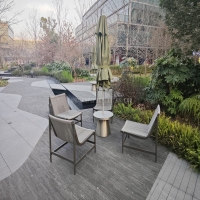Welcome to the website for landscape facilities products and knowledge.
How does the table’s design minimize the accumulation of dirt or grime in crevices?
Modern table design has evolved significantly to address the persistent problem of dirt and grime accumulation in hard-to-reach crevices. Manufacturers employ several strategic design elements that collectively minimize maintenance while maximizing cleanliness.
The most effective approach involves seamless construction techniques, where tables are crafted from single-piece materials or joined with invisible bonding methods. This eliminates the traditional gaps between components where debris typically collects. Rounded corners represent another crucial design feature, replacing sharp 90-degree angles that trap particles with smooth, curved transitions that allow effortless wiping.
Material selection plays an equally important role. Non-porous surfaces such as high-pressure laminates, sealed quartz, or properly finished solid surfaces resist absorption and prevent staining. These materials create impenetrable barriers against liquids and sticky substances that might otherwise seep into microscopic openings.
Many contemporary designs incorporate integrated edge banding and waterfall edges where the tabletop material flows continuously down the sides. This unified approach removes horizontal seams along the edges – common collection points for crumbs and dust. Additionally, innovative leg attachments using hidden fastening systems eliminate the dirt-trapping joints found in traditional screw-and-bracket assemblies.
For tables requiring multiple components, designers now implement precisely machined joinery with tolerances tight enough to prevent visible gaps while accommodating material expansion. Advanced finishes with hydrophobic properties further enhance cleanability by causing liquids to bead up rather than spread across surfaces.
The elevation of table bases represents another thoughtful consideration, creating sufficient clearance for standard cleaning tools to reach beneath the entire surface without awkward maneuvering. This prevents the accumulation of dust bunnies and debris in typically neglected spaces.
Through these integrated design strategies, modern tables achieve both aesthetic appeal and practical cleanliness, transforming furniture maintenance from a chore into a simple, occasional wipe-down while ensuring long-term hygiene and visual appeal in any environment.
Related search:

Recommendation
Metal structure rattan chair without armrests for single person, with woven seat and backrest.